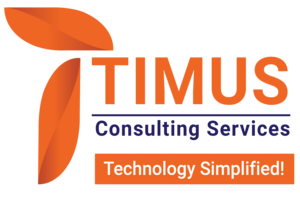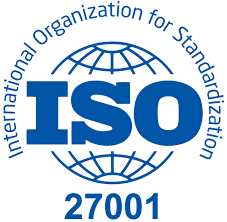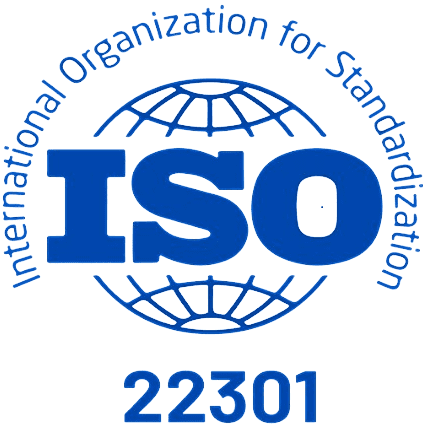In today’s dynamic business environment, small businesses face a myriad of risks that can threaten their survival and growth. Effective risk management is crucial for these businesses to navigate uncertainties and safeguard their operations. This blog explores practical risk management strategies that small businesses can implement to mitigate potential threats and ensure long-term success.
Understanding Risk Management
Risk management involves identifying, assessing, and prioritizing risks followed by coordinated efforts to minimize, monitor, and control the probability or impact of unfortunate events. For small businesses, this process is vital as they often operate with limited resources and cannot afford significant disruptions.
Key Risk Management Strategies
1. Risk Identification
The first step in risk management is identifying potential risks that could affect the business. These risks can be categorized into various types, including:
- Operational Risks: Issues related to internal processes, systems, and people.
- Financial Risks: Risks associated with financial transactions, market fluctuations, and economic conditions.
- Compliance Risks: Risks arising from non-compliance with laws, regulations, and industry standards.
- Strategic Risks: Risks related to business decisions, market competition, and changes in consumer preferences.
- Reputational Risks: Risks that can damage the business’s reputation and brand image.
Small businesses should conduct regular risk assessments to identify and document potential risks. This can be done through brainstorming sessions, surveys, and consultations with employees and stakeholders.
2. Risk Assessment and Prioritization
Once risks are identified, the next step is to assess their likelihood and potential impact. This involves evaluating the probability of each risk occurring and the severity of its consequences. Small businesses can use a risk matrix to categorize risks based on their likelihood and impact, helping prioritize which risks need immediate attention.
- High Likelihood, High Impact: These risks require immediate action and robust mitigation strategies.
- High Likelihood, Low Impact: These risks need monitoring and preventive measures.
- Low Likelihood, High Impact: These risks should be prepared for with contingency plans.
- Low Likelihood, Low Impact: These risks can be monitored with minimal intervention.
3. Risk Mitigation Strategies
After prioritizing risks, small businesses should develop and implement strategies to mitigate them. Some effective risk mitigation strategies include:
- Diversification: Diversifying products, services, and markets can reduce dependency on a single revenue stream and spread risk.
- Insurance: Purchasing insurance policies can provide financial protection against specific risks such as property damage, liability, and business interruption.
- Contracts and Agreements: Using well-drafted contracts and agreements can help manage risks related to suppliers, customers, and partners.
- Training and Education: Providing regular training to employees on risk management practices and safety protocols can reduce operational risks.
- Technology and Automation: Implementing technology solutions and automation can enhance efficiency and reduce human errors.
4. Risk Monitoring and Review
Risk management is an ongoing process that requires continuous monitoring and review. Small businesses should establish a system for tracking identified risks and monitoring the effectiveness of mitigation strategies. Regular reviews and updates to the risk management plan ensure that it remains relevant and effective in addressing new and emerging risks.
5. Crisis Management and Contingency Planning
Despite the best efforts to mitigate risks, some events may still occur. Having a crisis management plan in place is essential for small businesses to respond effectively to unexpected situations. This plan should include:
- Emergency Response Procedures: Clear guidelines on how to respond to different types of emergencies, including natural disasters, cyberattacks, and health crises.
- Communication Plan: A strategy for communicating with employees, customers, suppliers, and stakeholders during a crisis.
- Business Continuity Plan: A plan to ensure that critical business functions can continue during and after a crisis.
6. Building a Risk-Aware Culture
Creating a risk-aware culture within the organization is crucial for effective risk management. This involves fostering an environment where employees are encouraged to identify and report risks, and where risk management is integrated into daily operations. Leadership should lead by example, demonstrating a commitment to risk management and encouraging open communication about potential risks.
Case Studies of Successful Risk Management
To illustrate the importance and effectiveness of risk management strategies, let’s look at a few case studies of small businesses that have successfully navigated risks:
Case Study 1: Tech Startup
A small tech startup faced significant operational risks due to rapid growth and limited resources. By implementing a robust risk management plan, including regular risk assessments, employee training, and technology upgrades, the startup was able to streamline operations, reduce errors, and improve overall efficiency. This proactive approach helped the company scale successfully while minimizing disruptions.
Case Study 2: Retail Business
A small retail business experienced financial risks due to market fluctuations and changing consumer preferences. The business diversified its product offerings and expanded into new markets to reduce dependency on a single revenue stream. Additionally, the business invested in market research and customer feedback to stay ahead of trends and adapt quickly to changing demands. These strategies helped the business maintain steady growth and financial stability.
Case Study 3: Manufacturing Company
A small manufacturing company faced compliance risks related to industry regulations and safety standards. The company implemented a comprehensive compliance program, including regular audits, employee training, and updated safety protocols. By staying compliant with regulations and maintaining high safety standards, the company avoided costly fines and reputational damage, ensuring long-term success.
Conclusion
Risk management is a critical component of business strategy for small businesses. By identifying, assessing, and mitigating risks, small businesses can protect their operations, enhance resilience, and achieve sustainable growth. Implementing the strategies outlined in this blog can help small businesses navigate uncertainties and build a strong foundation for future success.
Remember, risk management is not a one-time task but an ongoing process that requires continuous attention and adaptation. By fostering a risk-aware culture and staying proactive, small businesses can turn potential threats into opportunities and thrive in today’s competitive landscape.
About us
We are Timus Consulting Services, a fast-growing, premium Governance, Risk, and compliance (GRC) consulting firm, with a specialization in theGRC implementation, customization, and support.
Our team has consolidated experience of more than 15 years working with financial majors across the globe. Our team is comprised of experienced GRC and technology professionals that have an average of 10 years of experience. Our services include:
- GRC implementation, enhancement, customization, Development / Delivery
- GRC Training
- GRC maintenance, and Support
- GRC staff augmentation
Our team
Our team (consultants in their previous roles) have worked on some of the major OpenPages projects for fortune 500 clients across the globe. Over the past year, we have experienced rapid growth and as of now we have a team of 15+ experienced and fully certified OpenPages consultants, OpenPages QA and OpenPages lead/architects at all experience levels.
Our key strengths:
Our expertise lies in covering the length and breadth of the IBM OpenPages GRC platform. We specialize in:
- Expert business consulting in GRC domain including use cases like Operational Risk Management, Internal Audit Management, Third party risk management, IT Governance amongst others
- OpenPages GRC platform customization and third-party integration
- Building custom business solutions on OpenPages GRC platform
Connect with us:
Feel free to reach out to us for any of your GRC requirements.
Email: Business@timusconsulting.com
Phone: +91 9665833224
WhatsApp: +44 7424222412
Website: www.Timusconsulting.com





